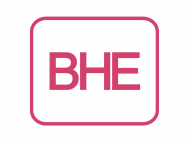In an age of increasing digitisation, guests also expect smart and seamless experiences in their leisure time. Access systems in ski resorts are a particular focus in this regard. Axess AG has teamed up with KATHREIN Solutions to develop a BLE-based access system that supports both classic RFID media and digital tickets on smartphones. The following article presents the solution in detail, describes its technical implementation and compares it with existing systems from other market participants.
Digital transformation at lift access
The digital transformation is also making its way to the ski slopes. In a technology partnership, KATHREIN Solutions and Axess AG have developed a modern access system that makes it much easier for skiers to enter the ski resort: a BLE-based ski gate that can process both digital tickets on smartphones and classic RFID cards. Following successful tests in real-world operation, the system is currently being rolled out in Europe and the USA.
Until now, many ski resorts have used RFID chip cards that had to be purchased on site and held up to a reader upon entry – often resulting in waiting times at the ticket offices. An Austrian operator wanted to digitise this process and commissioned Axess, a long-standing manufacturer of access gates, to develop a system that does not require a physical ticket. Axess then turned to its technology partner KATHREIN Solutions to jointly develop a BLE-based solution. The aim was to create a system that allows digital tickets to be read directly from a smartphone without having to take the device out of your pocket.
Technology in detail: BLE as the key to automation
The technological basis of the system is Bluetooth Low Energy (BLE), an energy-saving variant of the Bluetooth standard. BLE is particularly suitable for applications in the IoT (Internet of Things) sector, as it can transmit continuous advertising signals with minimal energy consumption. In the solution used here, guests’ smartphones send BLE tokens that have been generated and activated beforehand via the SkiWallet app.
These tokens contain encrypted information about the ticket status and user identity. The BLE antennas at the gates continuously scan the immediate vicinity and automatically recognise authorised tokens. Unlike NFC or QR codes, the device does not need to be taken out – access is hands-free.
A key technical feature is targeting through high-precision signal localisation: KATHREIN’s solution uses a special antenna and signal processing design that recognises exactly which device is in front of which gate. This avoids the problem of ‘cross-reads’, which can occur with BLE due to its relatively long range. A typical cross-read would, for example, cause the gate to incorrectly recognise the signal of a guest at a neighbouring access point. Localisation is achieved using RSSI-based triangulation in combination with software filters for motion analysis, among other things.
System integration: retrofit instead of replacement investment
A key advantage for operators is the modular expansion of existing infrastructure. The existing RFID gates did not need to be replaced, but simply supplemented with BLE-enabled components. This significantly reduces investment costs and allows for a gradual transition.
Integration into the Axess platform was achieved via standardised interfaces, with KATHREIN customising the BLE components at both the hardware and protocol levels. The architecture follows an edge computing approach: the BLE readers process signals locally before the result is forwarded in real time to the gate control system via the Axess system. This minimises latency and optimises gate throughput.
Another aspect is data security. The BLE tokens are protected against spoofing by rolling codes and symmetric encryption techniques (e.g. AES-128). In addition, there is no permanent Bluetooth pairing, which reduces potential points of attack. Communication between the app, backend and gate is secured by TLS.
User guidance and user experience
User guidance is very simple: the digital ticket is purchased in the web shop or on site, stored in the Axess SkiWallet app and activated. As soon as the skier approaches the gate, the system automatically recognises the ticket – access is contactless, without the need to actively present the mobile phone.
Compared to previous solutions such as QR codes or NFC-based access, BLE offers a significant gain in convenience – especially in cold temperatures, when wearing gloves or for families with multiple devices. Integration into a digital ecosystem with an app, online shop, CRM and event modules also opens up new possibilities for personalisation and visitor management.
Market comparison: How BLE compares to established solutions
SKIDATA: Proven RFID technology with NFC extension
SKIDATA, a long-standing provider of access solutions in ski resorts, continues to rely on RFID tickets in combination with NFC-based smartphone access. Users must actively hold their mobile phones up to a reader terminal to gain access. BLE is not currently used as standard technology. However, integration into parking and ticketing systems is well established and allows complex scenarios such as dynamic pricing or combination tickets.
Teamaxess: App access with QR codes and location sharing
Italian provider Teamaxess uses QR code-based tickets that are activated via an app with location recognition. Access control is via optical scanners. The advantage is the possibility of location-based activation to prevent misuse – however, users must always have their smartphones active.
Alturos Destinations: Focus on experience rather than technology
Alturos Destinations offers Skiline, a comprehensive digital guest management system that also includes access control – albeit via partner solutions, mostly using QR or RFID technology. BLE is not yet used as an access technology. The focus is more on content, tracking (e.g. altitude, photo points) and CRM.
Results from practical use
The first pilot projects in Austria, France and the USA showed a significant increase in gate throughput, as the contactless system reduces delays. The error rate due to lost cards or defective QR codes also fell measurably.
In addition, the digital system made it easier to analyse visitor behaviour – for example, to optimise operating times or identify peak times at certain lifts.
Conclusion and outlook
The BLE-based access solution from KATHREIN and Axess is an example of successful digital transformation in the Alpine region. It combines high user comfort with technical precision and can be integrated into existing infrastructures. Compared to existing solutions based on RFID, QR or NFC, it sets new standards in the field of contactless authentication.
In future, BLE access systems could be used not only in ski resorts, but also in other leisure and transport areas, such as amusement parks, stadiums and public transport. Its modular architecture and openness to standards make the solution an interesting building block for the smart tourism infrastructure of tomorrow.



